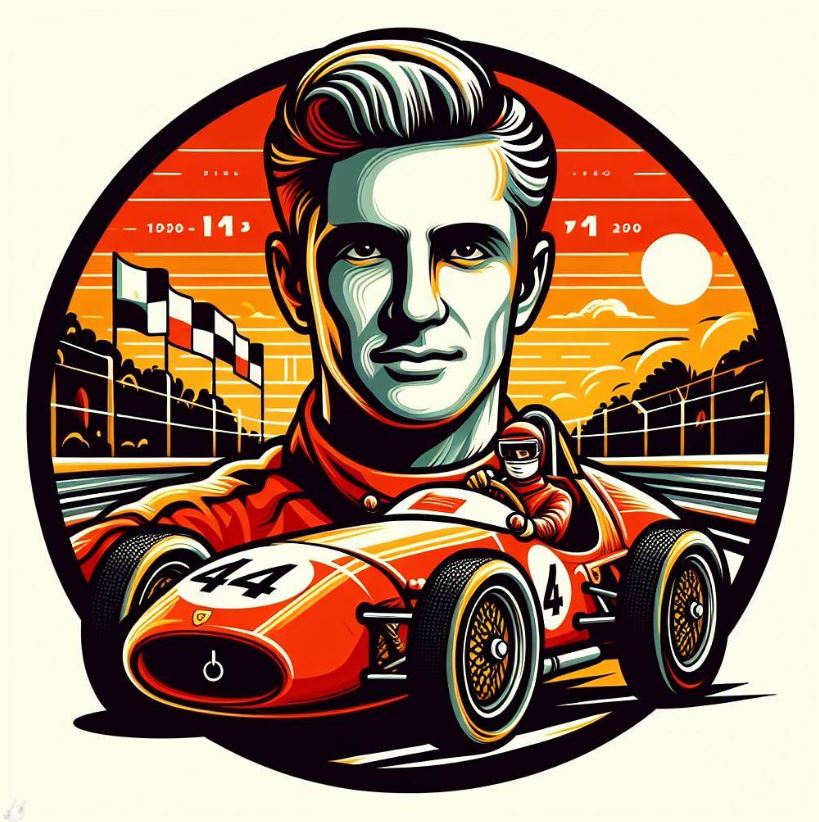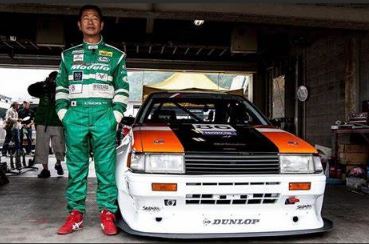Imagine a time when cars were more than just a means of transportation, but a canvas for art and a platform for innovation. This is the story of drifting, a driving technique that transformed the world of motorsports.
Our journey begins in the early 20th century with an Italian driver named Tazio Nuvolari, who was so skilled that he could make his car dance around corners in a controlled slide. This was the birth of the four-wheel drift, a precursor to what we now know as drifting.
Fast forward to the 1970s in Japan, where a motorcyclist named Kunimitsu Takahashi decided to apply these techniques to car racing. Behind the wheel of a Nissan Skyline, he pushed the boundaries of speed and control, sliding around corners without losing momentum. His style was so unique and thrilling that it captured the attention of racing fans and drivers alike, forever changing the face of motorsports.
Today, the spirit of drifting lives on in cars like the Ford Focus RS, the first production car to feature a ‘Drift mode’. But the beauty of drifting is that it’s not limited to any specific make or model. With the right modifications, any car can become a masterpiece on the track. So buckle up, and let’s enjoy the ride!
#1Genesis
 Imagine a world where the roar of an engine and the screech of tires on asphalt become a symphony of speed. This is the world of drifting, a mesmerizing dance between car and driver that has captivated audiences worldwide.
Imagine a world where the roar of an engine and the screech of tires on asphalt become a symphony of speed. This is the world of drifting, a mesmerizing dance between car and driver that has captivated audiences worldwide.
Our story begins not in the neon-lit streets of Tokyo, but in the heart of Europe, before 1950. Here, Italian driver Tazio Nuvolari, endorsed by none other than Enzo Ferrari himself, pioneered the art of the four-wheel drift. This technique was later refined by British racing driver Stirling Moss, who used the accelerator pedal to steer through curves in Formula 1 races, creating a spectacle that was as beautiful as it was thrilling.
#2Mastery over Speed and Control
 Fast forward to the 1970s in Japan, where the world of motorsports was about to be revolutionized. Kunimitsu Takahashi, a motorcyclist turned driver, became a legend for his drifting techniques. His mastery over his Nissan Skyline during the All Japan Touring Car Championship races earned him numerous championships and a legion of fans. The sight of his car, tires smoking, sliding at high speeds with a high slip angle, was nothing short of breathtaking.
Fast forward to the 1970s in Japan, where the world of motorsports was about to be revolutionized. Kunimitsu Takahashi, a motorcyclist turned driver, became a legend for his drifting techniques. His mastery over his Nissan Skyline during the All Japan Touring Car Championship races earned him numerous championships and a legion of fans. The sight of his car, tires smoking, sliding at high speeds with a high slip angle, was nothing short of breathtaking.
Inspired by Takahashi’s skill, Keiichi Tsuchiya, known as the “Drift King”, began practicing his drifting skills on the mountain roads of Japan. These serpentine roads, with their numerous switchbacks and hairpins, provided the perfect setting for drivers to test and refine their skills.
In the 1960s, a group of racers known as the Rolling Zoku raced on these mountain roads, trying to set record times on a designated course. The challenging terrain and the thrill of speed in the dead of night created an adrenaline-fueled environment that was perfect for the development of drifting.
By the late 1980s, these winding mountain roads outside of Japan’s biggest cities had turned into late-night playgrounds for hundreds of young drivers searching for oversteer thrills. Races were often initiated by drivers simply flashing their car’s high beams to cue opponents. This would trigger a race, and soon, a trail of racers would be seen coming off the mountains.
So, the mountains of Japan were not just the birthplace of drifting, but also a symbol of its rebellious spirit and the relentless pursuit of mastery over speed and control. It’s a testament to the passion and daring of those early drifters, who took a simple drive in the mountains and turned it into a worldwide phenomenon
His reputation grew, and in 1987, his drifting skills were captured in a video called Plushy. This video became a sensation, inspiring a new generation of professional drifting drivers.
In 1988, Tsuchiya and Daijiro Inada, the founder and chief editor of Option magazine, organized one of the first events specifically for drifting, called the Ikaten. Tsuchiya’s skill was so great that he could drift through every turn in Tsukuba Circuit, a testament to his mastery of the art.
#3The Real DK
 The title of “Drift King” is held by Keiichi Tsuchiya. Born on January 30, 1956, Tsuchiya is a professional Japanese race car driver known for his nontraditional use of drifting in non-drifting racing events. He played a significant role in popularizing drifting as a motorsport. Tsuchiya’s skills and contributions to the sport have made him a legend in the world of motorsports. He has also been involved in various aspects of popular culture, including serving as a consultant for the popular manga and anime series, Initial D, and making a cameo appearance in The Fast and the Furious: Tokyo Drift. His driving skills, charisma, and passion for the sport have earned him a place in the hearts of motorsport enthusiasts worldwide.
The title of “Drift King” is held by Keiichi Tsuchiya. Born on January 30, 1956, Tsuchiya is a professional Japanese race car driver known for his nontraditional use of drifting in non-drifting racing events. He played a significant role in popularizing drifting as a motorsport. Tsuchiya’s skills and contributions to the sport have made him a legend in the world of motorsports. He has also been involved in various aspects of popular culture, including serving as a consultant for the popular manga and anime series, Initial D, and making a cameo appearance in The Fast and the Furious: Tokyo Drift. His driving skills, charisma, and passion for the sport have earned him a place in the hearts of motorsport enthusiasts worldwide.
#4Popularity
 Imagine a sunny day in 1996 at Willow Springs Raceway in California. The air is filled with the roar of engines and the smell of burning rubber. This was the setting for one of the earliest recorded drift events outside Japan, hosted by the Japanese drifting magazine and organization Option.
Imagine a sunny day in 1996 at Willow Springs Raceway in California. The air is filled with the roar of engines and the smell of burning rubber. This was the setting for one of the earliest recorded drift events outside Japan, hosted by the Japanese drifting magazine and organization Option.
The event was a spectacle of speed and precision, with demonstrations by Daijiro Inada, the founder of the Japanese D1 Grand Prix, NHRA Funny Car drag racer Kenji Okazaki, and the “Drift King” himself, Keiichi Tsuchiya. They showcased their skills in a Nissan 180SX, a car that had traveled all the way from Japan. The event attracted a diverse group of entrants, including Rhys Millen and Bryan Norris.
Since then, drifting has taken the world by storm, becoming a popular motorsport in North America, Australia, Asia, and Europe. The 21st century has seen a surge in grassroots drifting, leading to an increase in the prices of FR cars and making parts more scarce.
Today, drifting has evolved into a competitive sport where drivers, almost exclusively in rear-wheel-drive cars, compete to earn points from judges based on various factors. The D1 Grand Prix in Japan has pioneered the sport at the top levels of competition.
But the thrill of drifting isn’t confined to Japan. Events like Drift Games Extreme in Ireland, Formula D in the United States, Drift All-stars, King of Europe, Drift Masters, and the British Drift Championship in Europe, WDS in China, RDS in Russia, Formula Drift Asia in Southeast Asia, NZ Drift Series in New Zealand, the Australian Drifting Grand Prix, Spec - D Drift Series in Western Canada, and the Greek Drift Championship (Drift Wars) have helped to establish drifting as a legitimate motorsport worldwide.
Drivers in these series demonstrate their ability to keep their cars sliding for extended periods of time, often linking several turns. It’s a dance of control and chaos, a testament to the skill and daring of the drivers. Drivers in these series demonstrate their ability to keep their cars sliding for extended periods of time, often linking several turns. It’s a dance of control and chaos, a testament to the skill and daring of the drivers. So whether you’re a motorsport enthusiast or just someone who appreciates a good show, drifting has something to offer.
Reactions
Already reacted for this post.
















